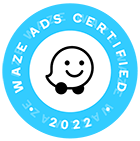A strong brand is one of the most valuable assets a company can have. Regardless of the industry, a business often lives and dies by the brand that it has cultivated in the minds of its customers or clients. Branding is so powerful, that specific branded names can become part of a society’s colloquial and everyday language. Google, Photoshop, Xerox, Uber, Kleenex, Venmo – all of these brands have become verbs, used in common conversation. For example:
“Let me google that.”
“Just venmo me the difference.”
“I photoshopped his face onto a duck.”
“I’m going to uber to the concert.”
And the list goes on!
It’s no wonder then, that some of the biggest companies in the world spend so much time, and employ hundreds of people to maintain and fine-tune their branding. If you’re a small business, you’re often competing against these same big brands, which have large marketing budgets and a rock-solid customer base. That’s why business owners need to recognize how vital branding is to the success of their business. While your hometown HVAC business may never achieve national “verb status,” becoming a household name in your local area is a goal worthy of company resources.
It’s More Than Just Colors
Simply having a brand is not enough. Branding is more than just a fancy logo and catchy tagline; it’s the culmination of all the aspects of your business! From your company name, logo, and products, to your brick-and-mortar stores, websites, customer service, and employees – your brand is a reflection of your business and its values. Customers come to trust your brand, (and by extension your business) and will place you ahead of your competitors even if you offer the same products. If you can build brand awareness with your target consumer, you will be the first business a consumer will patronize when they’re thinking about making a purchase. That’s why it’s so important to build a brand that’s recognizable to your audience and trusted in your industry.
The Keys to Brand Building
While brand-building strategies vary from industry to industry, and even business to business, there are a few key tenets that can apply to almost any brand looking to improve its awareness. Here are the most important aspects we’ve identified:
Mission Statements
Before you dive deep into any strategy, you first have to establish the purpose of your brand. Your business should have a mission statement – the ‘what’, ‘how’, and ‘why’ of what you do. Identifying the purpose of your business will not only help you narrow the focus of your operations but also help you differentiate from your competition.
Let’s take Starbucks for example. Although they sell coffee, that’s not what they’re really selling – they’re selling a brand. The mission statement of Starbucks is: “To inspire and nurture the human spirit – one person, one cup, and one neighborhood at a time.” While Starbucks (depending on who you ask) sells good coffee, they’re really in the business of selling the feeling you get when you walk into a store and have a Starbucks “experience.” Everything, from the type of wood used to make the serving counter, to the arrangement of foods in the display case, is carefully crafted to create a specific feeling. This is why consumers will pay a premium to enjoy a Starbucks coffee over a cup of joe from the local deli. Starbucks is just one of many examples of the effectiveness of good branding and how it can positively impact your business.
Target Audiences
You may ask “Why would I need a target audience? I can sell my product to anyone!” And while you may be able to sell your product to a wide range of consumers, you can’t make your business appeal to everyone in the world.
Grandpa might own a pair of Nikes, but sixty-year-old men aren’t necessarily Nike’s target demographic. The fact is, Nike is targeting a specific subset of the population – mostly athletes, younger people, and fitness-minded individuals.
With a well-defined target audience, it’s easier to craft a strategy that appeals directly to the type of consumers who are more likely to enter your sales process and become customers. It’s also far more cost-effective to develop a smaller, more focused campaign, versus a broad and scattershot approach.
Brand Voices
An often-overlooked tenet of brand building is the brand voice. Your brand’s voice is the personality and tone with which you speak to your audience; is your tone serious? Light-hearted? Professional and well-read? Regardless of how you want to communicate, your brand’s voice must be consistent across all of your marketing channels. Because of the crowded digital landscape, it’s hard for your brand to stand out just on a logo and products alone. Many businesses have found great success in developing a unique voice for their brand and using that voice as a hallmark that a consumer can recognize.
One company that has positively leveraged its brand voice is Wendy’s. Their often-sassy Twitter has built a reputation as being one of the most extreme and potent uses of a brand voice in the age of social media. Their playful persona took the model of the professional and “buttoned-up” approach to social media branding and flipped it on its head. What resulted was a tsunami of likes, retweets, replies, and hilarious interactions between Wendy’s, their customers, and even rival brands. Customers reacted to this positively, with everyone sharing laughs as Wendy’s traded insults with the likes of McDonald’s, Burger King, Subway, and many others. While this edgy approach might not be ideal for everyone, it’s just one example of how developing a unique voice for your brand can help you stand out from the crowd.
Your Brand’s Story
Every brand has a story. Stories have long been a powerful tool of communication in our society, allowing people to connect on a deeper level. Even if you think the story of your business isn’t compelling, telling consumers why you’re in business is one of the best ways to differentiate yourself from your competitors and build a connection.
It’s important to keep your brand’s story simple. Your story should begin with the problem your business set out to solve. It should then continue to describe how you solved it and end with excitement about the success that was produced. This three-part model allows your story to flow naturally and will help build trust between you and the consumer.
Branding Matters
No matter how much you spend on creative advertising or product packaging, your business won’t get very far if it doesn’t have a brand to set itself apart. Developing a unique brand isn’t instantaneous – it’s a process that can take a lifetime of refinement and fine-tuning. As your business evolves, so should its brand, and how you approach branding across your social media channels. Applying some of the concepts we’ve discussed here can help you take your brand to the next level.
PriMedia has helped countless businesses build their brand and attract more consumers. We offer world-class advertising services including Content Marketing, Graphic Design, Web Development, and more! Visit our website to check out our full range of services and our portfolio of work.



